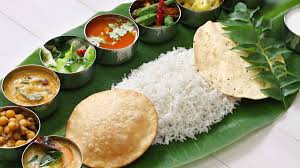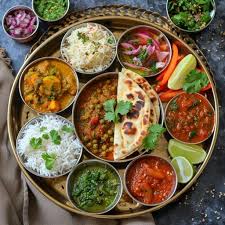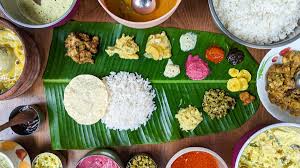
Traditional Indian Food
Traditional Indian Food: A Flavorful Journey Through Culture and Heritage
Traditional Indian food is more than just a meal – it is a celebration of culture, heritage, and diversity. Known for its rich flavors, aromatic spices, and unique cooking techniques, Indian cuisine has captured the hearts of food lovers around the world. From the streets of Delhi to the kitchens of South India, every region offers its own traditional recipes that reflect history, tradition, and love for good Traditional Indian Food
The Diversity of Traditional Indian Food
India is a land of vast cultural diversity, and this is beautifully reflected in its cuisine. Each state has its own specialties shaped by climate, culture, and local ingredients:
North India is famous for buttery curries, naan, and tandoori dishes. Dishes like Paneer Butter Masala, Dal Makhani, and Rogan Josh are classic favorites.

South India offers flavorful dosas, idlis, and sambar. Coconut, tamarind, and curry leaves are the soul of South Indian food.
East India is known for sweets like Rasgulla and Sandesh, along with fish curries and rice-based dishesTraditional Indian Food
West India showcases spicy street food, dhokla, pav bhaji, and traditional Rajasthani thalis.
This regional variety makes traditional Indian food not only diverse but also one of the most exciting cuisines globally.
The Role of Spices in Indian Cuisine
Spices are the heart of Indian cooking. Turmeric, cumin, coriander, cardamom, and cloves are not only used for flavor but also for their health benefits. The traditional Indian way of cooking ensures a perfect balance of taste and nutrition, making every dish wholesome and satisfying.
Traditional Indian Meals and Culture
Food in India is deeply connected with culture and festivals. During Diwali, sweets like ladoos and jalebis are prepared, while Pongal in Tamil Nadu celebrates harvest with a special rice dish. Weddings and celebrations are incomplete without a lavish spread of curries, biryanis, and desserts.

Eating together is also an important tradition. Families gather to share meals, symbolizing love and unity. Many traditional Indian foods are still served on banana leaves or thalis, keeping ancient customs alive.
Health Benefits of Traditional Indian Food
Traditional Indian food is not just tasty but also nutritious. Many recipes are based on Ayurvedic principles, focusing on balancing the body through natural ingredients. Lentils, rice, whole grains, fresh vegetables, Traditional Indian Food and herbs make Indian food healthy and fulfilling. Spices like turmeric and ginger have anti-inflammatory properties, while ghee and curd aid digestion.
Why Traditional Indian Food is Loved Worldwide
With its wide range of flavors, vegetarian options, and rich heritage, Indian food has gained popularity across the globe. Indian restaurants are found in almost every country, serving everything from biryani to butter chicken. Food lovers appreciate the complexity, aroma, and soulful touch of traditional recipes.
Final Thoughts
Traditional Indian food is not just about taste – it is about history, culture, and togetherness. Every dish tells a story, whether it’s a spicy curry from Punjab or a sweet delicacy from Bengal. With its perfect blend of flavors and health benefits, Indian cuisine continues to be one of the most loved and celebrated foods in the world.
Traditional Indian Food: More Than Just Taste
Traditional Indian food is deeply tied to culture, heritage, and family life. Every dish represents not just ingredients, but also history, rituals, and traditions passed down through generations
and happiness.
every occasion more meaningful and memorable.Indian Food Goes Global
Traditional Indian food has found fans across the world. Restaurants in the UK, USA, Canada, and the Middle East serve authentic Indian dishes.
Popular Dishes Abroad
-
Butter Chicken
-
Chicken Tikka Masala
-
Samosas
-
Naan & Parathas
-
Masala Chai
Why the World Loves Indian Food
The variety of vegetarian options, the perfect balance of spices, and the soulful taste make Indian cuisine globally popular.
